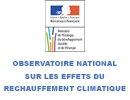Assessing Policies to Fight Greenhouse Gases, Outline and Summary of Findings from Three Complementary Approaches
Assessing Policies to Fight Greenhouse Gases, Outline and Summary of Findings from Three Complementary Approaches
Objectives:
Drawing upon a spontaneous quantitative scenario developed up to 2030, the aim was to design variant scenarios (and estimate their cost) that would lead to an overall stabilisation in greenhouse gas concentrations, well beyond 2030, following recommendations from experts, the IPCC, and European Commission’s GECS Programme. The issues addressed will thus be how to allocate emission-reduction efforts between the regions and countries involved.
The distinction was made between two periods: that prior to and during the Kyoto Commitment Period (2008-2012), and the one thereafter, up to 2030.
During the first period, several exercises will be carried out on the basis of the post-Kyoto agreements (the current standing of negotiations being summarised in COP7):
- Kyoto without the United States and without geothermal air
- Kyoto with geothermal air, under two different assumptions:
- The transitioning countries make use of their monopolistic power (price manipulation)
- No price manipulation
- The United States participate according to terms yet to be defined, but less constraining than the Kyoto terms. The instruments used are also recommended by international agreements: flexibility, MOC, MDP, carbon sequestration.
As to the second commitment period, effort-sharing scenarios between the regions and countries, governed by a variety of criteria, have been set out: distant emission convergence per capita, consideration for emissions in 2010 and the population, effort convergence (expenditure by GDP), etc. There, too, the instruments recommended by international agreements will be used.
Method: This method is original in that it will draw upon three models from different families:
The “European” energy model, technico-economic in nature, PRIMES, which describes to a fine degree of detail the technologies and resulting technical changes, and which will set out precisely the marginal cost curves for carbon abatement, these being also extended to agriculture, through a process developed for this study and thanks to which possible changes in farming practices will be described.
The general numerical equilibrium model GEME3, which can be used for such purposes as determining variations in well-being connected to each strategy.
The European econometric model NEMESIS, which is used to produce forward-looking scenarios and assess the short- and medium-term consequences of gas reduction strategies on competitiveness, growth and employment, to a detailed level by sector.
Outcomes:
A variety of burden-sharing scenarios toward reducing emissions, with the associated consequences in terms of marginal costs, well being, competitiveness, employment, etc.
Listing of the deliverables achieved through different approaches and an executive summary for public decision-makers.
Detailed fine-tuned results by sector for France.
| Coordinators |
Paul Zagamé, COMMISSARIAT GENERAL AU PLAN |
| Partnership |
ICCS – NTUA |
| Funding |
MEDD
|
| Budget |
159635.99€ (including tax)
|




